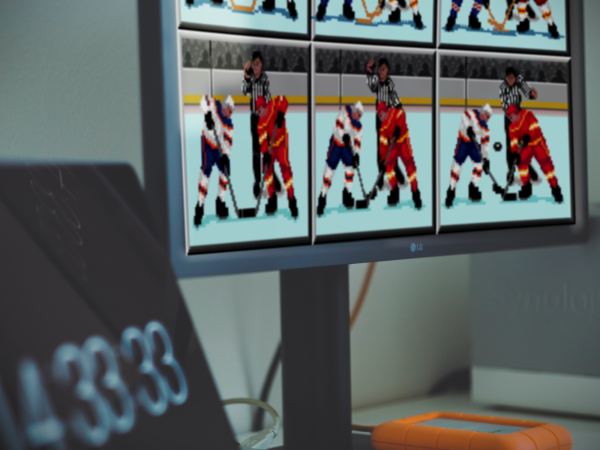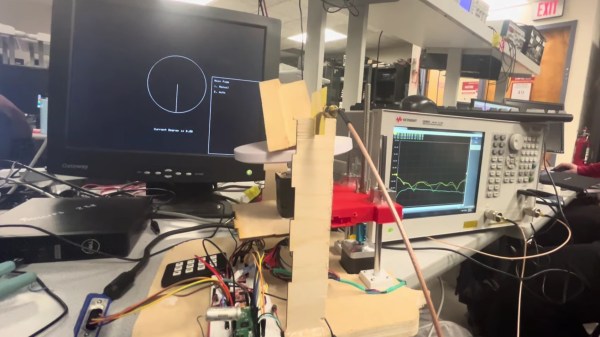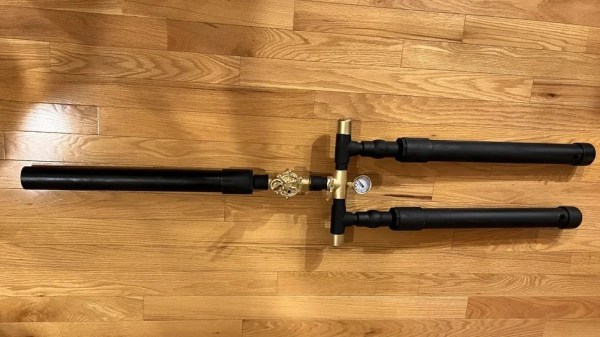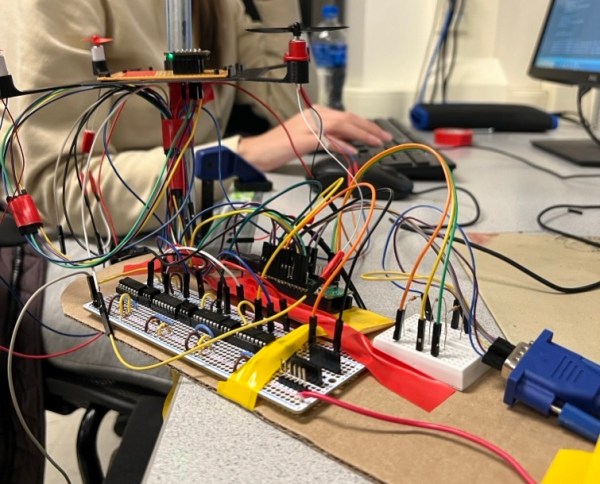Thirty years is a long time to keep a piece of software alive, but there aren’t many pieces of software like NHL ’94 for the Sega Genesis. Despite new annual iterations of publisher Electronic Arts’ NHL hockey video game some players never connected with it like quite like they did in 1994. For years now it’s been a tradition for members of the NHL ’94 forums to incorporate the hockey league’s current players into the Sega Genesis original, however, the work [Adam] contributed this season goes beyond a mere roster update. This NHL ’24 ROM hack is more like a complete overhaul. Everything that was old is new again. Continue reading “NHL ’24 ROM Hack Reimagines Classic Game, Zamboni And All”
Day: January 1, 2024
Spying On The ESP32’s GPIO
The ESP32 has been a go-to microcontroller platform for a while now, thanks to its versatile capabilities, integrated Wi-Fi and Bluetooth connectivity, and low power consumption. It’s ideal for a wide range of projects especially those revolving around IoT, partially because of all of the libraries and tools available for it now. The latest tool from [The Last Outpost Workshop] adds a feature we didn’t know we wanted until now: a webserver showing real-time updates of what all of the GPIO pins are doing.
The live GPIO pin monitoring library sets up the ESP32 to stream information about what all of the pins are doing in real time to a webserver, which displays the information as a helpful graphic. The demonstration in the video below shows and example troubleshooting a situation where the code is correct but there’s a mistake in the wiring, helping to quickly identify the problem and hopefully eliminating a wild goose chase for a bug in the software. The library can be quickly installed using the Arduino IDE and only requires the use of one other library and a few lines of code to get everything up and running.
As far as a debugging tool goes, something like this could save a lot of us a significant amount of time, especially with how easy it is to set up. A real-time look into the pins and their behavior, including those set up for PWM, is invaluable for plenty of situations. Of course if you’re building something like a real-time operating system that needs responses within a very specific interval you may want to look at more in-depth strategies for probing the GPIO.
Thanks to [Bob] for the tip!
Precise Positioning With The RP2040
Microwave imaging is similar to CT imaging, but instead of X-rays, the microwaves are used to probe the structure and composition of an object. To facilitate experimentation with microwave imaging, [Zehao Li] and [Kapil Gangwar] developed a system based on the RP2040 to control the height and rotation of a test object.
Their control system has a refreshingly physical user interface—a keypad. The keypad is used to configure the object’s position and the scanning step size, while user menus and the sample position are displayed in a clean and uncluttered interface over VGA. The RP2040 runs a multi-threaded program to handle user input, VGA display, and precise driving of two stepper motors for sample positioning.
The microwave imaging was performed by measuring the RF transmission over 2.5-8 GHz between two Vivaldi antennas on either side of the sample at a variety of angles. 2D cross-sections of the test object were reconstructed in Matlab using filtered back-projection. In this proof-of-concept demonstration, a commercial vector network analyzer was used to collect the data, but one could imagine migrating to a software defined radio (SDR) in the future.
A video demonstrating the system is embedded below the break. If you’re interested in DIY radio imaging, you might be interested in this guide to building your own synthetic aperture radar setup, or this analysis of an automotive radar chip.
Electroluminescent Surfboard Looks Sharp For Night Surfing
If you’ve watched Point Break lately, you probably considered the thrill and elation involved in night surfing. If you’ve hung out with a lifeguard, though, you might instead have fretted over the dangers. In any case, it remains a popular pastime, and it’s all the more fun with a light-up surfboard like this one from [Moritz Sivers].
This project came about due to a local tradition for [Moritz], where people often surf at night to avoid the crowded breaks during the day. The build started from scratch, with a foam blank shaped into a compact design optimized for riversurfing, with three fins set up in a thruster configuration. The back side of the board was given a coat of resin impregnated with glow-in-the-dark pigment such that the entire thing would emit an nice green glow, making it more visible at night. On the top surface, a pocket was cut in the board to host electronics for running an electroluminescent panel, complete with artwork inspired by 2001 – A Space Odyssey. The board was also outlined with EL wire to further improve the look.
[Moritz] has experimented with some neat LED surfboard designs before, too. Video after the break.
Continue reading “Electroluminescent Surfboard Looks Sharp For Night Surfing”
Developing An App For Reduced-Gravity Flying
You’ve likely heard of the “vomit comet” — an rather graphic nickname for the aircraft used to provide short bursts of near-weightlessness by flying along a parabolic trajectory. They’re used to train astronauts, perform zero-g experiments, and famously let director Ron Howard create the realistic spaceflight scenes for Apollo 13. But you might be surprised to find that, outside of the padding that lines their interior for when the occupants inevitably bump into the walls or ceiling, they aren’t quite as specialized as you might think.
In fact, you can achieve a similar result in a small private aircraft — assuming you’ve got the proper touch on the controls. Which is why [Chaz] has been working on an Android app that assists pilots in finding that sweet spot.
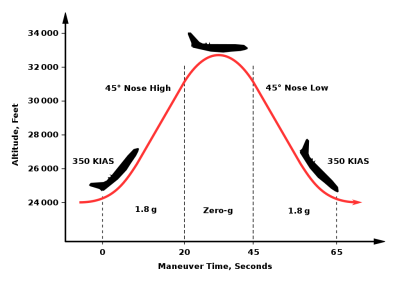
With his software running, the pilot first puts the plane into a climb, and then noses over and attempts to keep the indicator on the phone’s display green for as long as possible. It’s not easy, but in the video after the break you can see they’re able to pull it off for long enough to get things floating around the cockpit.
Continue reading “Developing An App For Reduced-Gravity Flying”
Building A Simple Compressed Air Cannon Is Easy
The world of warfare was revolutionized by the development of black powder, fireworks, cannons, and the like. You don’t need any of that chemical nonsense to just have fun, though, as this compressed air cannon from [OtisLiu153] demonstrates.
The build uses PVC pipes for both the barrel and the air tank. In the case of the latter, avoiding over-pressurization is key to avoiding injury, though some will say you should simply never build a PVC pipe pressure vessel at all. In this case, [OtisLiu153] strictly recommends 150 psi as a limit, which is nicely within the 280 PSI rating of the 2″ Schedule 40 PVC being used. Though, as they note, the connections in the design aren’t necessarily up to the same rating.
Off-the-shelf couplings are used to piece everything together, with the twin-reservoir design also acting as a useful shoulder mount. Charging the cannon is done via a Schrader valve, as you might find on a bike’s inner tube, and firing is achieved via a ball valve.
Of course, if you build such an air cannon yourself, just be careful with your aim. Video after the break.
Continue reading “Building A Simple Compressed Air Cannon Is Easy”
A Deep Dive Into Quadcopter Controls
In the old days, building a quadcopter or drone required a lot of hacking together of various components from the motors to the batteries and even the control software. Not so much anymore, with quadcopters of all sizes ready to go literally out-of-the-box. While this has resulted in a number of knock-on effects such as FAA regulations for drone pilots, it’s also let us disconnect a little bit from the more interesting control systems these unique aircraft have. A group at Cornell wanted to take a closer look into the control systems for drones and built this one-dimensional quadcopter to experiment with.
The drone is only capable of flying in one dimension to allow the project to more easily fit into the four-week schedule of the class, so it’s restricted to travel along a vertical rod (which also improves the safety of the lab). The drone knows its current position using an on-board IMU and can be commanded to move to a different position, but it first has to calculate the movements it needs to make as well as making use of a PID control system to make its movements as smooth as possible. The movements are translated into commands to the individual propellers which get their power from a circuit designed from scratch for this build.
All of the components of the project were built specifically for this drone, including the drone platform itself which was 3D printed to hold the microcontroller, motors, and accommodate the rod that allows it to travel up and down. There were some challenges such as having to move the microcontroller off of the platform and boosting the current-handling capacity of the power supply to the motors. Controlling quadcopters, even in just one dimension, is a complex topic when building everything from the ground up, but this guide goes some more of the details of PID controllers and how they help quadcopters maintain their position.

